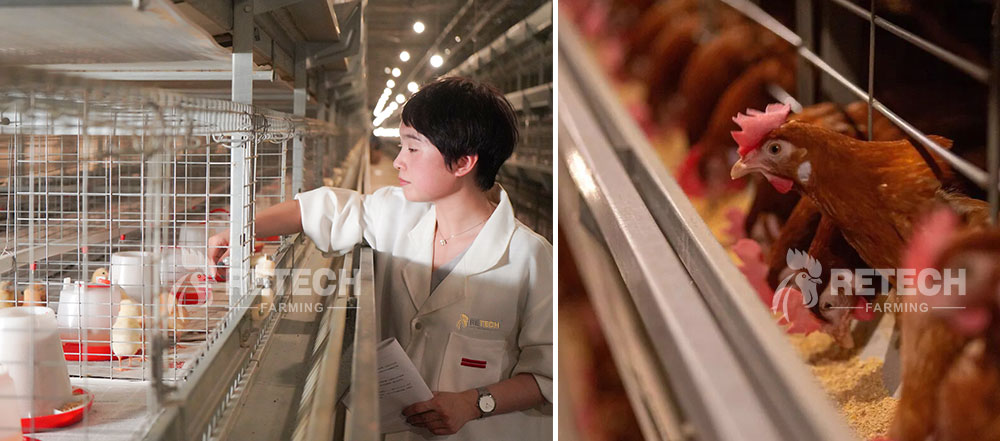Close search
 Published :
/
Published :
/ Posted by : Retch
Posted by : RetchMany customers consult us on how to set up a modern poultry farm. Dr. Lv helped us to sum up below 7 points that will help you to carry out the project more smoothly and successfully:
1. Study the poultry farming industry
2. Learn the project profitability.
4. Obtain a farm license
5. Design a scientific farm layout
6. Choose the proper poultry raising equipment
7. Optimize poultry production performance
Before getting into this industry, we need know to know poultry business is profitable but also be aware there are a lot potential risks, such as low productivity, variable feeding cost, chicken plague, etc. Therefore, you need to prepare for the following:
1. View FAO's Agricultural Reports
Their report contains trustworthy poultry statistics, so it's definitely worth a read. But it can be very time consuming to read the report. If you don't have enough time, you can contact us for getting info on local successful projects.
2. Check the poultry farming data from the National Bureau of Statistics
They often provide a wealth of information about your country's poultry industry, from price index to production and demand estimates, with great local sensitivity. This can be a great recourse to understand economy trends and how it affects local poultry industry and potentially your poultry business profits.
3. Find a reliable breeding consultant to assist you.
The consultant can help you make judgments more quickly and accurately. Of course, our project managers also have years of experience of setting up local projects, and we will accompany you throughout the successful establishment of your farm.
4. Visit local successful farms
Learning experience from successful farms will make you grow quickly. For example: how to make sales, whether chickens are healthy, what kind of equipment to use, trends in the poultry industry, etc. You can also visit RETECH's local projects. contact us for getting more information.
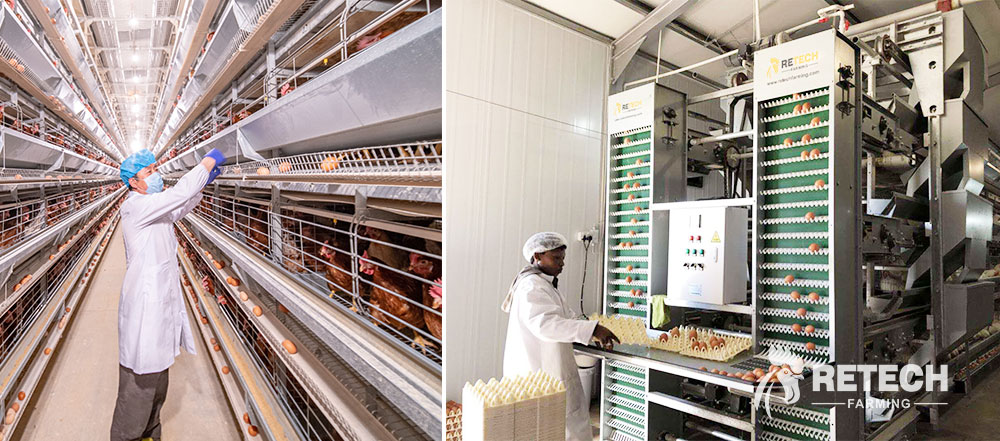
In poultry farming, you have to keep an eye on the input-output ratio. You can list your plans on poultry business for 5 years, and judge whether it’s truly profitable. Here is Input-output ratio formula:
1.Egg Laying hens
Total Cycle Revenue:
Egg production cycle 374 days * Egg production rate 88% * egg laying hens Quantity *Egg price
Egg laying hens quantity * Mortality rate 95% *chicken price (/kg) *average weight of laying hens (2.2kg/bird)
Total Cycle Expenses:
Egg laying cycle 374 days * Feeding for laying hens 0.105kg/bird/day * Breeding quantity (bird) * Feeding price of laying hens (/kg)
The brooding cycle is 130 days * feeding for chicks is 0.045kg/bird/day * breeding quantity(bird) * feeding price of the chicks (/kg)
Day Old Chick price (/bird) * breeding quantity /egg laying mortality 95%
Total Cycle Revenue:
Slaughter weight (kg/bird) * 98% Morality rate * breeding quantity (bird) * chicken wholesale price (/kg)
Total Cycle Expenses:Breeding period (day) * Average feed intake (0.2kg/bird/day) * Breeding quantity (bird) * Feeding price (/kg)
Day old Chick price (/piece) * Breeding quantity (bird)/Mortality 98%
Notice:
The above breeding data are all from China in 2022. it could be various in different countries. If you need detailed data, you can contact us. We will provide you with input-output ratio for free.
Expenditure does not include vaccine fee, water fee, electricity fee, worker management fee.
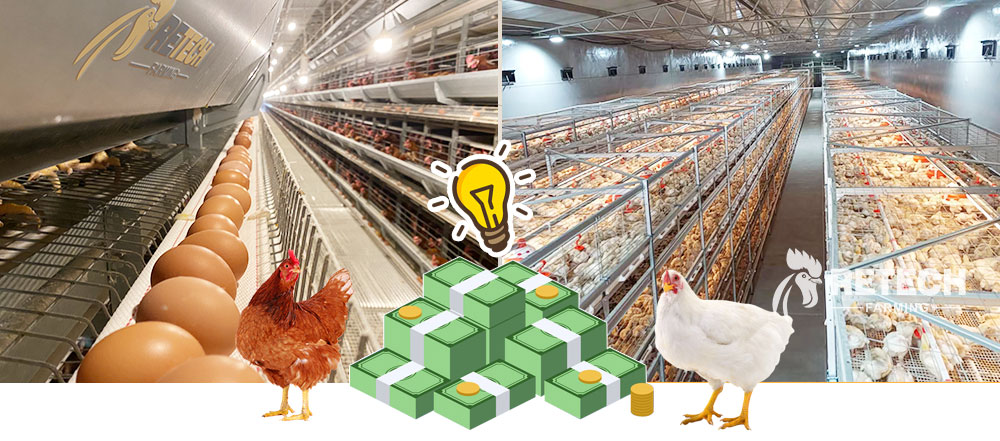
Understanding the value chain of the poultry industry is critical. Typically, there are direct selling, , indirect selling or cooperative selling. This depends mainly on the maturity of the local poultry market. In Africa, you need to contact your local poultry product distributor or supermarket, in Asia, you need to contact local integrator in the industry.
Tip: Google search "Country + Value Chain" for more information.
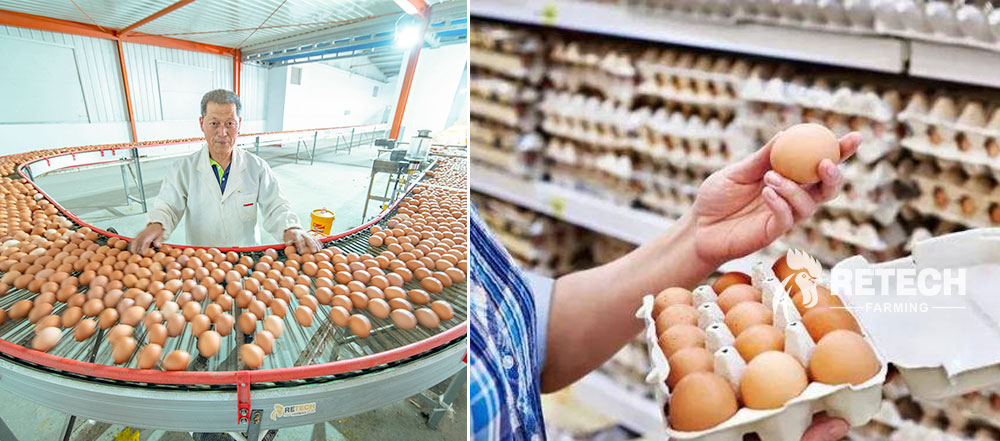
Farmers need to apply to the local agricultural department for filing. The filing conditions may include: ID card, business license, business plan, business license, land license, environmental management license, water source and related licenses, animal epidemic prevention conditions certificate, etc. It is recommended that you contact your local Department of Agriculture for a detailed list.
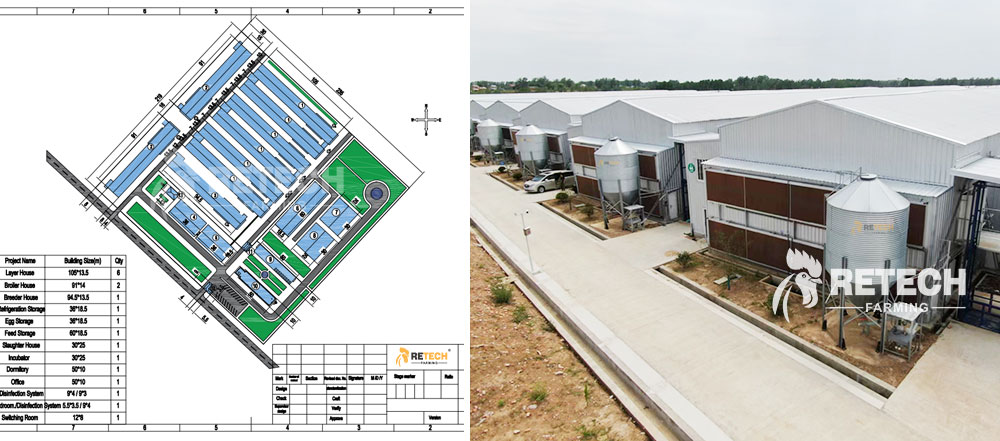
The layout of the farm should be planned according to the site topography, topography and other natural conditions to facilitate production and management. Lots of things will need to take into consideration during the farm designing process. Therefore, beside of years experience in project designing, the designer must also be familiar with the local farming environment.
https://retechfarming.com/about#quality
Here are a few examples of successful chicken house layouts for your reference, hope this helps you to visualize your farm:
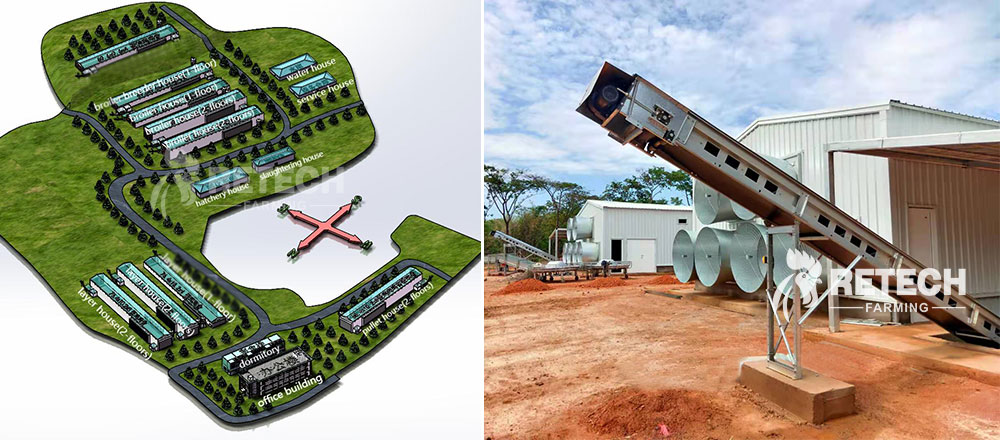
Poultry raising equipment is a necessary condition to improve breeding efficiency and house safety. There are a couple of things we need to take into consideration when choosing equipment. Combined with the actual situation, on the premise of ensuring the breeding effect, we should choose the most cost-effective equipment. Several things need to consider:
Here are a few examples of commercial poultry farms to help you visualize your own poultry farm:
https://retechfarming.com/about#quality

Excellent house management will help ensure farmer to achieve higher production performance, including quality nutrition, guidance from breeding consultants, and house management. Some key points as below:
1. Bio-security
Effective bio-security provides effective defenses against diseases, pests and insects and helps block the spreading of disease between houses.
2. Sufficient time for disinfection of empty houses (more than 14 days)
Adequate downtime of at least 14 days and proper cleaning and disinfection between flock placements can help reduce disease transmission between flocks, ensure to have plenty of time to prepare for the next flock.
3. Screening and management of chicks
Quality chicks have a major impact on the future health and performance of poultry. The brooding period is also an important for chicken gut growth and the development of a balanced flora. So we have to make sure we have a good start.
4. Chicken manure cleaning
Regular cleaning of chicken manure can reduce ammonia emission in the chicken house. Battery cage equipment also keeps chickens away from wet ground, ensure chickens to have healthy guts.
5. Safe water source
Water is the most important nutrient for poultry. Adequate clean water will maximize performance. Factors to consider when considering water management include:
Water quality, hose height, water pressure, mineral content and pipeline cleanliness.
6. Feed management
Chickens must have easy access to adequate and clean feed, also need to avoid waste as much as possible. Good feed quality avoiding contaminants such as mycotoxins is important to ensure production performance.
7. Environmental management and health monitoring
Increasing the frequency of on-site inspections of poultry houses can help detect diseases at early stage, It is recommended to monitor the temperature, humidity and ventilation inside the house as well as the outside temperature on a daily basis. Keeping tabs on feed and water intake can help monitor chicken status.
8. Safety warning
When using automated poultry equipment, we must ensure that we can receive timely reminders of abnormal situation in the chicken house. For example: high temperature warning, low water pressure warning, feeding empty warning, operation failure warning, etc.
